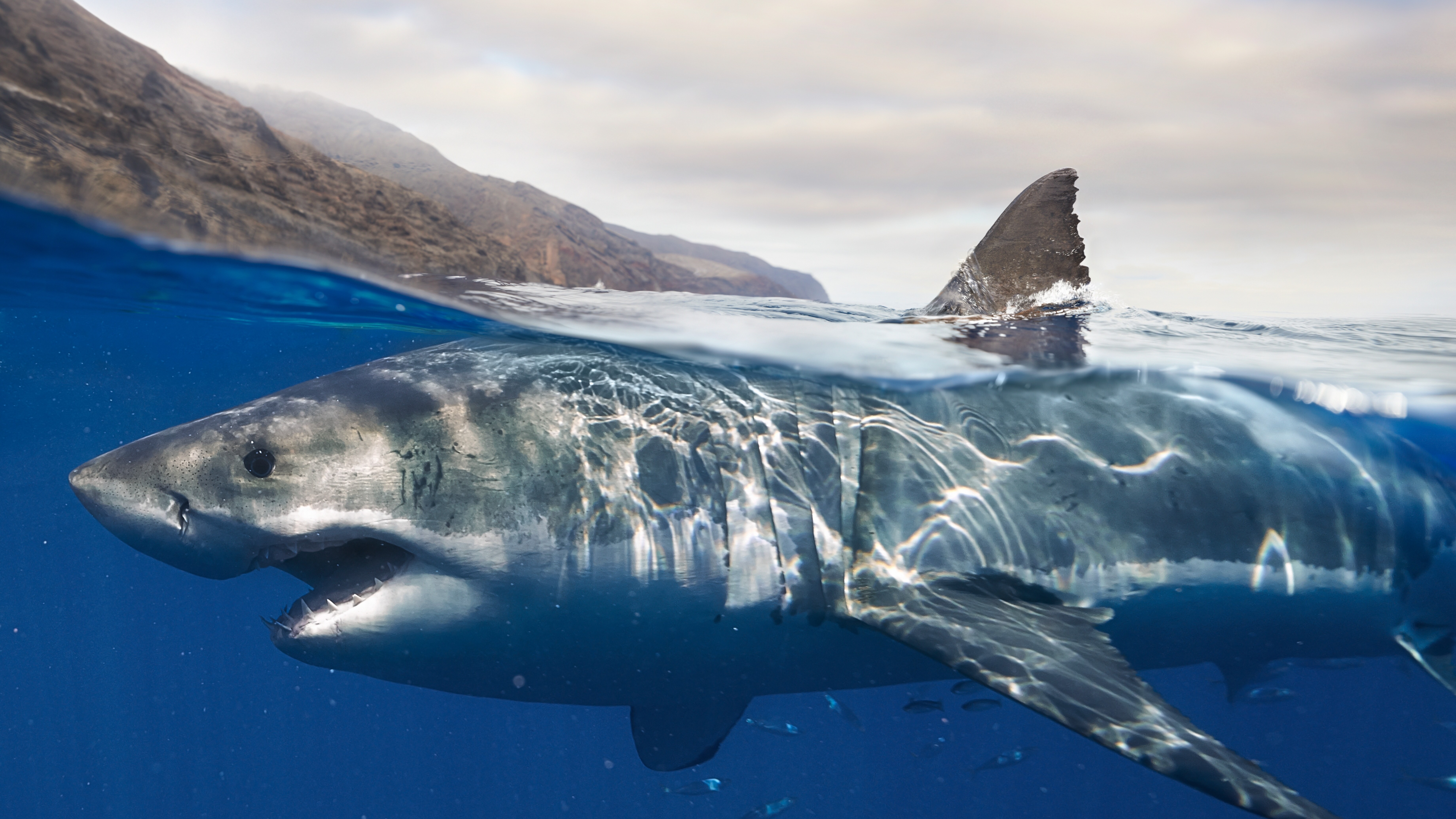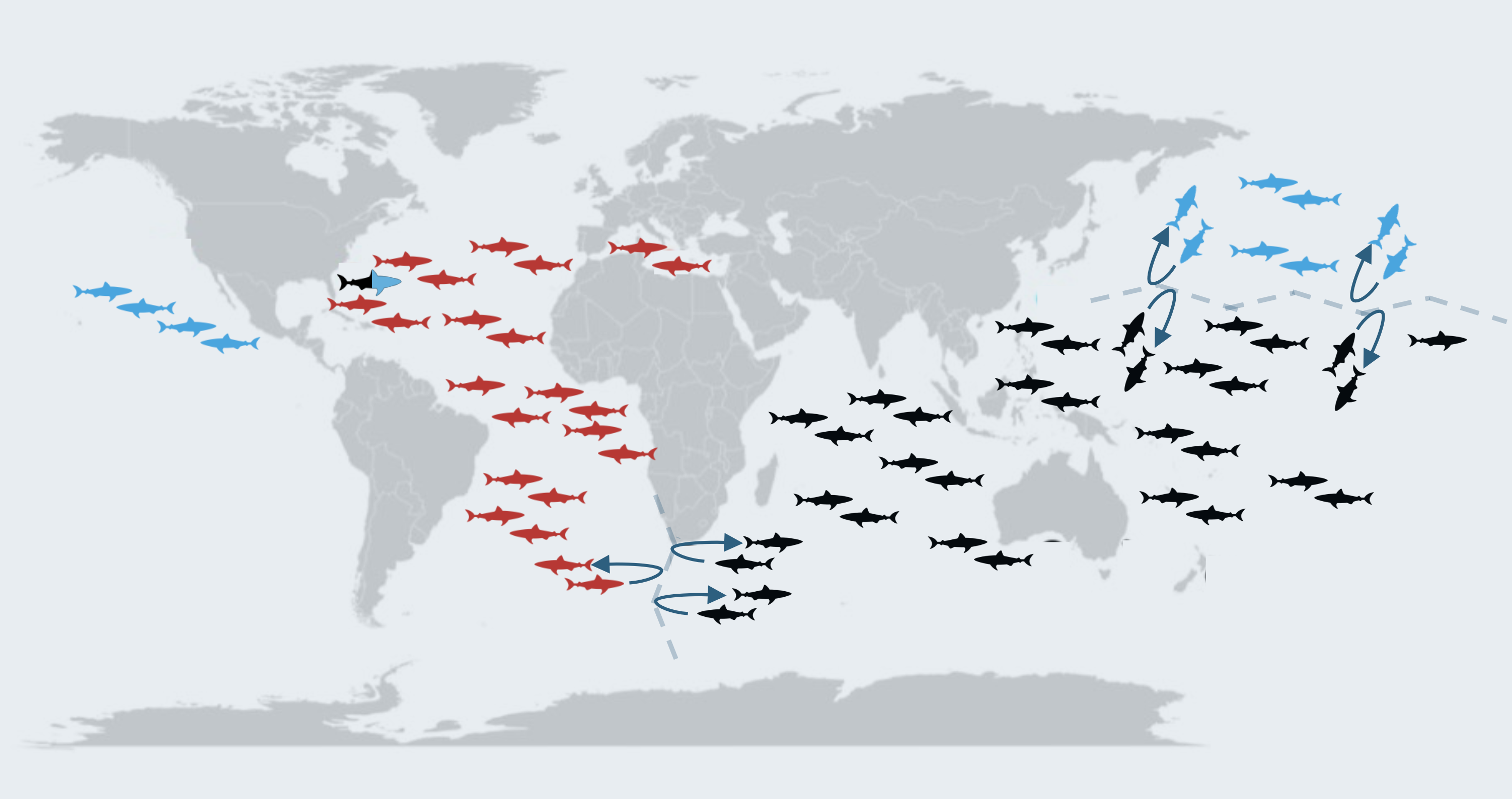Great white sharks split into 3 populations 200,000 years ago and never mixed again — except for one hybrid found in the Bermuda Triangle
Scientists found three distinct great-white-shark populations that congregate in different oceans and do not interbreed. Their separation may have implications for conservation.

Great white sharks split into three distinct groups about 100,000 to 200,000 years ago and seldom mingled, a new study shows. The findings suggest that if one of these populations goes extinct, it cannot be replaced, the study authors said.
In the study, published July 23 in the journal Current Biology, scientists sequenced the genomes of 89 great white sharks (Carcharodon carcharias) sampled worldwide. Their results pointed to three distinct groups that diverged over time and did not interbreed. These groups are found in three locations: the North Atlantic/Mediterranean, Indo-Pacific and North Pacific oceans.
"Now we understand that if you wipe out sharks in a particular area, they're not going to be repopulated by sharks from another lineage," study co-author Leslie Noble, a molecular evolutionary ecologist at Nord University in Norway, told Live Science. "The so-called global population of white sharks has now shrunk to these three very discreet units. And it's really quite concerning."
Like salmon, female sharks always return to their birth site to drop their pups, Noble said. This means that the sharks' mitochondrial DNA, which they inherit only from their mothers, "is a bit like a passport — it shows exactly where they come from," Noble said. Earlier studies have looked at white sharks' mitochondrial genome to study their genetic diversity. However, a portion of this maternal DNA is prone to mutation, making them unreliable references for tracing the lineage divergence.
In the new study, Noble and his team sifted through hundreds of thousands of genetic markers by analyzing variations of white shark DNA at a single nucleotide level — its basic building block.
The scientists laid out the whole genome information of 89 white sharks sampled worldwide and grouped related genetic sequences using a statistical algorithm. They found that the sharks were segregated into three distinct populations.
The team traced the history of these sharks by identifying when the genetic makeup of a shared ancestor began to diverge. These analyses suggested that the shark lineages split about 100,000 to 200,000 years ago during the Penultimate Glaciation Period — an ice age that saw sea levels fall up to 490 feet (150 meters) lower than current levels.
Sign up for the Live Science daily newsletter now
Get the world’s most fascinating discoveries delivered straight to your inbox.
It is still unclear why these populations split in the first place. Noble suspects the drop in sea level and changes in ocean currents and temperature may have created a biogeographical barrier for these sharks.

"We don't find genes moving across those [geographical] boundaries," Noble said. "That to us suggests that there must be some sort of a selection, which is making those different lineages adapted to the particular areas they're in."
Mysteriously, the only evidence of interbreeding was the presence of a hybrid shark — a mix of the Indo-Pacific and the North Pacific lineage — in the Bermuda Triangle. It is possible that more instances of interbreeding have occurred but that the offspring of these hybrids were lost through natural selection, Noble said.
Related: Great White Sharks Gather in Droves in the Middle of Nowhere, But Why?
The International Union of Conservation of Nature (IUCN) considers the great white shark vulnerable to extinction. These sharks lost about a third of their population between 1970 and 2018, but thanks to global protection efforts, their populations are slowly increasing.
To Noble, the existence of three lineages means conservation efforts should focus on maintaining each unit of the white shark population. If one population starts to stray into another's territory, interbreeding could occur and produce offspring that may not survive.
The disappearance of these apex predators would also have huge implications for humans. "Our fate is intimately bound with the great whites because we get about 20% of our protein from marine ecosystems, which the great whites keep healthy," Noble said. "So [if] we lose the great whites, we might lose a lot of our protein from these ecosystems."

Kristel is a science writer based in the U.S. with a doctorate in chemistry from the University of New South Wales, Australia. She holds a master's degree in science communication from the University of California, Santa Cruz. Her work has appeared in Drug Discovery News, Science, Eos and Mongabay, among other outlets. She received the 2022 Eric and Wendy Schmidt Awards for Excellence in Science Communications.









